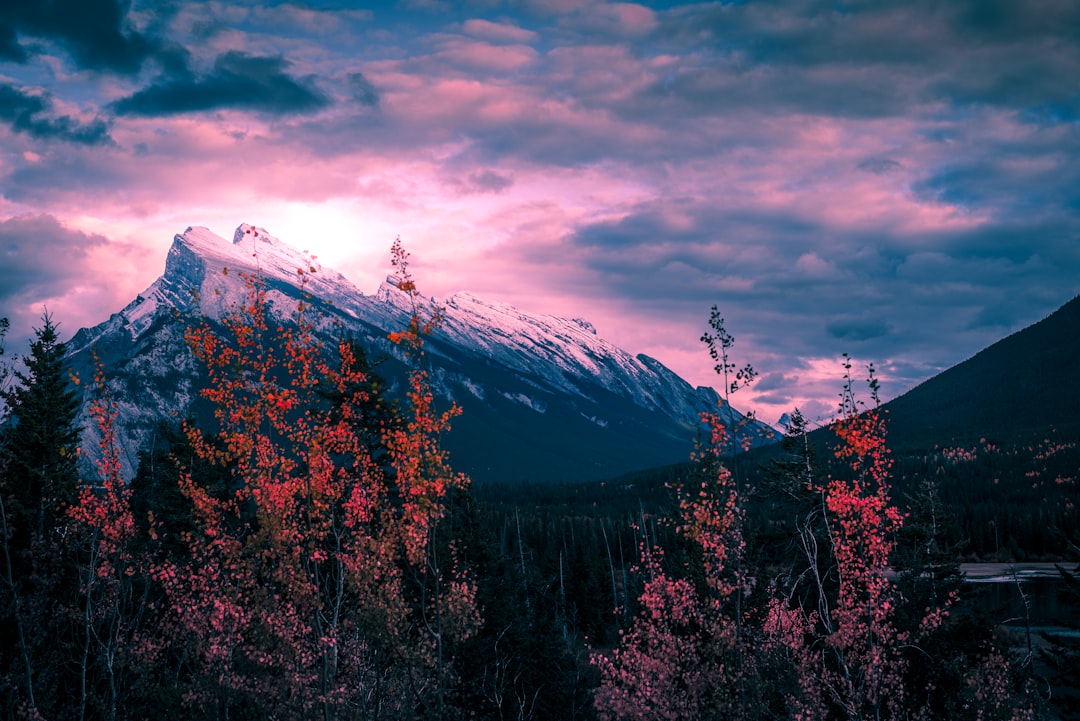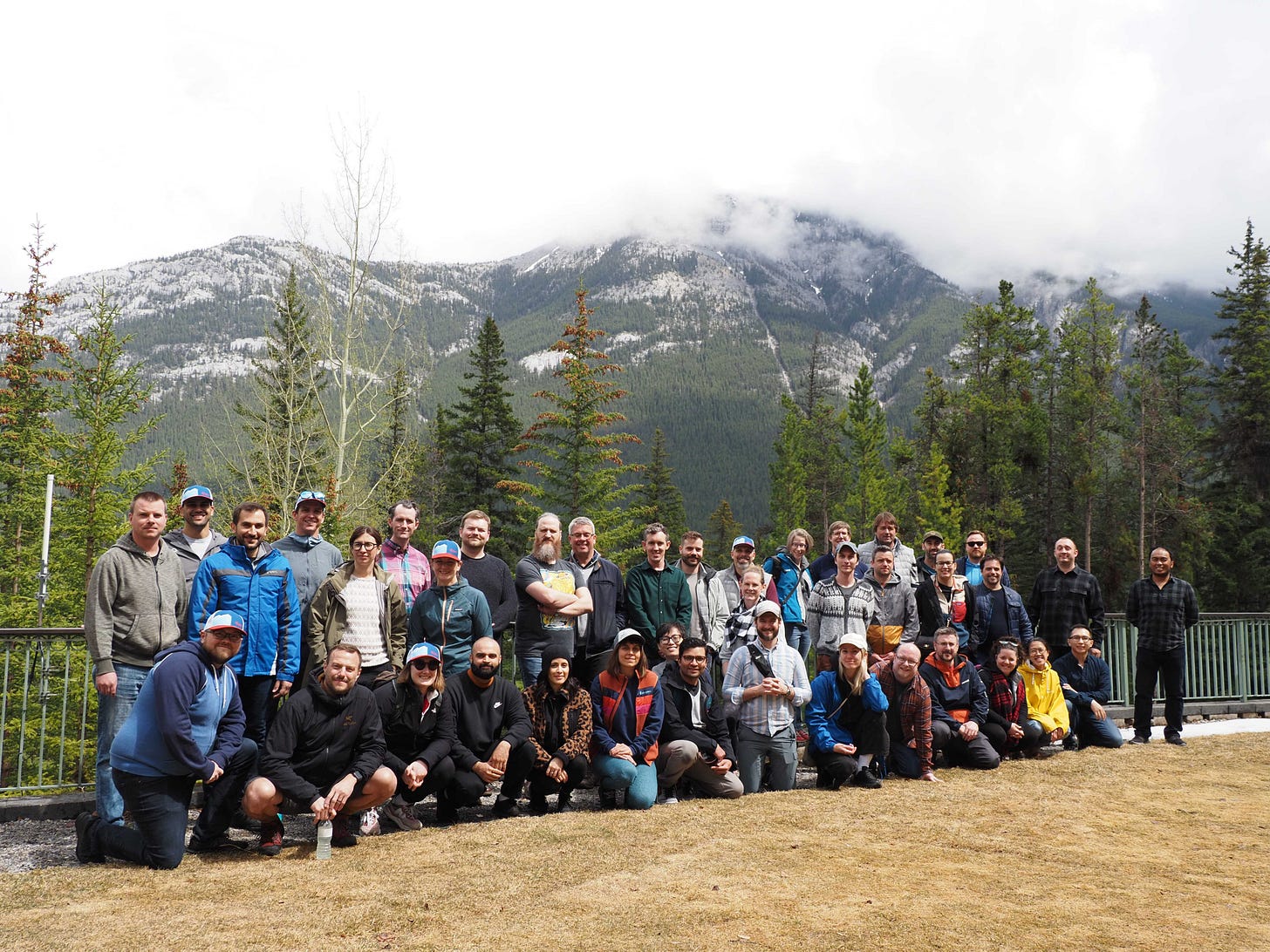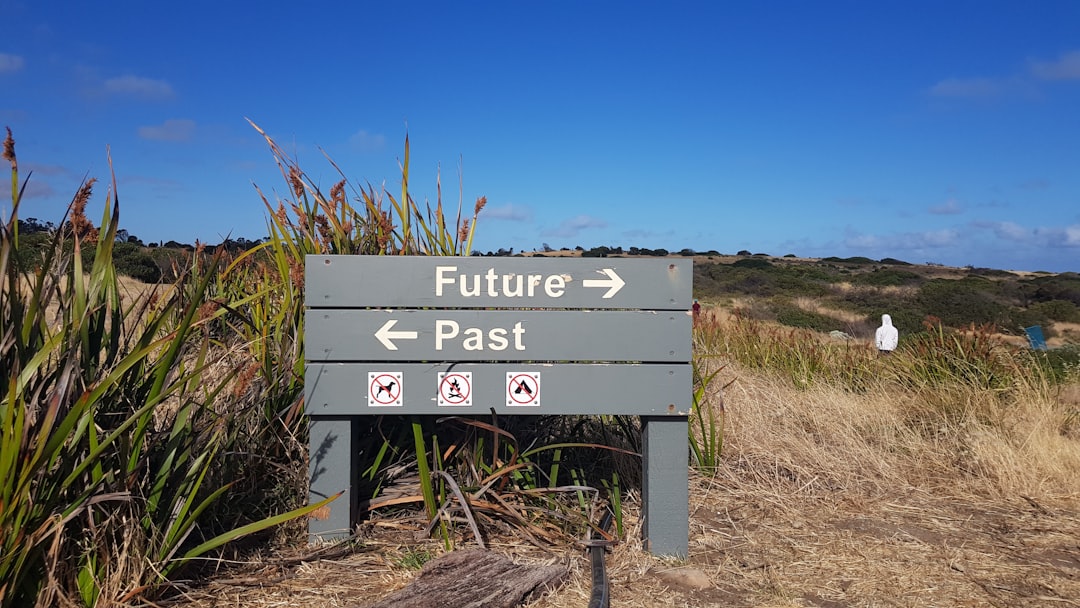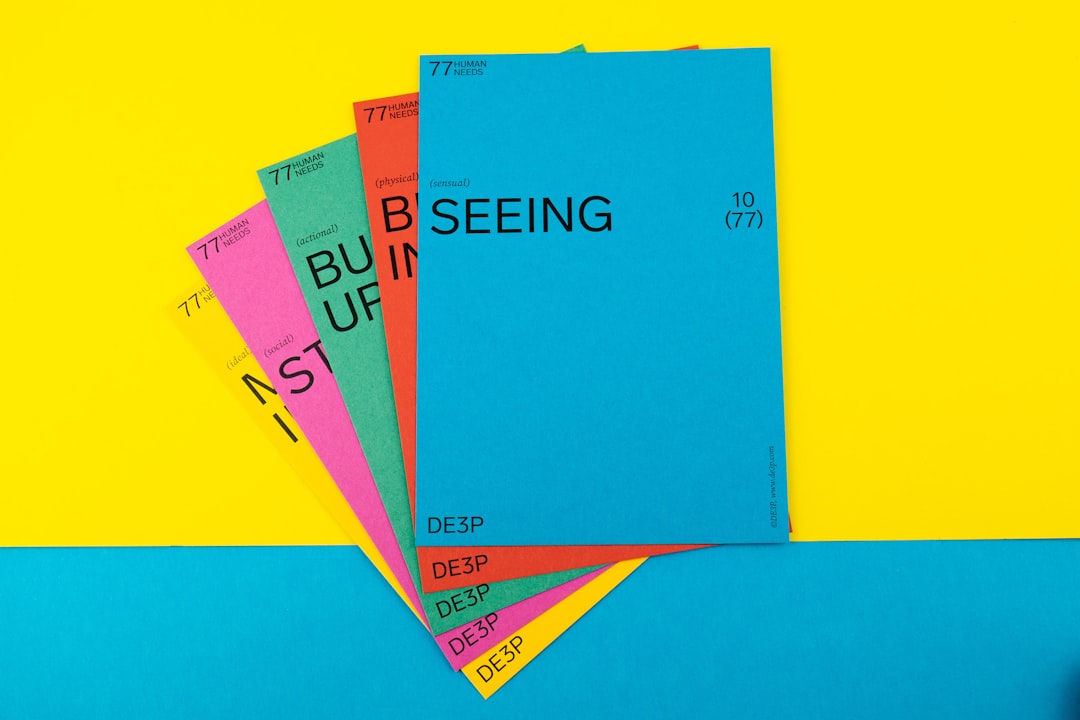Mountains of the mind
Building space for ideas
We have discussed the origin of ideas frequently on Strategic Geospatial.

Ideas are the basis of innovation; therefore, they are handy to have around. Last week, I was lucky enough to attend two events in one place; firstly, our annual Sparkgeo retreat, then North51. These two events, though different, were both designed to create collisions between people. Those collisions provide fertile soil for growing ideas and opportunities. In this post, I want to describe the purpose and structure of these events to provide a flavour of how we think about idea generation at Sparkgeo.
The Sparkgeo meetup
At Sparkgeo, we have run meetups for the last five years. For practical reasons, these have been centred on locations which were easy to get to for team members. They started in Prince George, then moved to Vancouver, and this year we chose Banff. Initially, we had thought of these as an opportunity to talk about company things. But as we have grown, the main benefit of these events is to connect physically. You may or may not know that the Sparkgeo team is remote-first. This means that we can hire from the entirety of Canada and the UK rather than any particular city or region. There are numerous upsides to remote working, but I am conscious that there are downsides too, and one of them is physical proximity to other people. The Sparkgeo meetup is our solution to this problem.
The basic structural feature of our meetup is the design of each day. We run this event over two full days with a low-key welcoming evening as people trickle in from different locations. In previous iterations, we held full days of meetings. However, with time we realized that we already do a lot of meetings, and though important, they can be boring. When we have these special opportunities to connect, we should not be wasting too much time on PowerPoint. So, each day is sliced up, the morning is taken up with team updates, and the afternoons are filled with activities, ideally outside.
If I was to add one note, we made the mistake of having a full morning of presentations and, on our second day, having a full morning of interactive activities. A better move would have been to have presentations until mid-morning, then a more interactive session up to lunch. This would ensure more energy. We’ll do this next year.
North51
I've travelled to Banff to attend North51 a number of times. This year we had the chance to co-host the event with Gno-sys. Jon Neufeld, who previously ran Tecterra, the previous hosts, brought Sparkgeo into this discussion because we have previously supported North51, and our values align closely. I have watched with great interest as this event has evolved from being somewhat Alberta-centric to being truly global. This growth is deserved as the event has matured in focus and content. Interestingly, by design, it has never grown much in size. This just means it has naturally deepened in quality.
N51 is single-tracked, short, and heavily curated. There are virtually no booths or sales paraphernalia. As a result, the focus is very much on collisions between ideas and people. Speakers are sought out for their insight, though applications to speak are encouraged. This year, we asked Daniel O'Donohue from the MapScaping podcast to MC, which was tremendously beneficial. His natural curiosity ensured insightful questioning, which warmed up the rest of the audience nicely.

Of course, this event took place in a beautiful setting, which provides a stunning backdrop and naturally encourages inspiration. Many participants took the opportunity to ski or hike after and during the event. One final note Daniel suggested was to actually provide time to get the participants outside in a curated manner. This is a great idea but something that must be carefully thought through.
Hopefully, this short note provides some insight into designing events for ideas.






